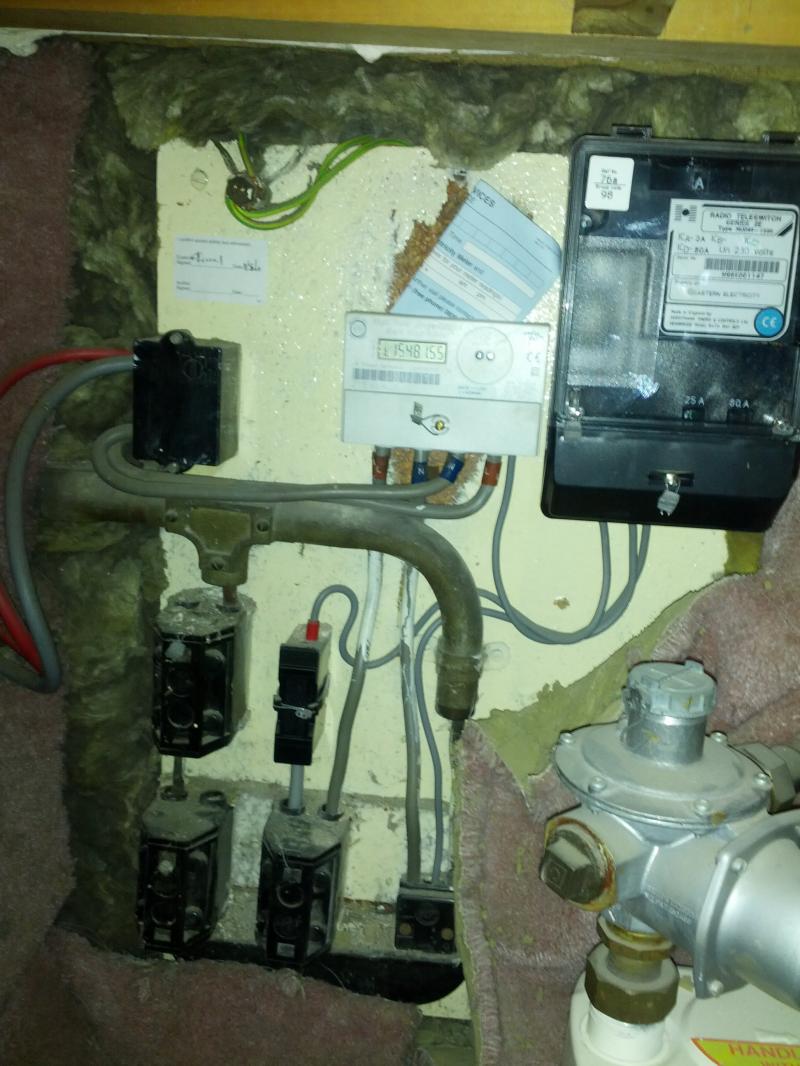Hi,
I live in an old house which has obviously had many changes/improvements to the electric supply over the years. It currently looks very complicated and I'm wondering if there's anything which can be done to simplify it.
I'm guessing that the supply enters at the bottom, and goes through several fuses before reaching the meter. Then heads off to the left to the consumer unit. Does that look right?
There's a "radio teleswitch" at the top right. Are these still used, or is this system obsolete?
I'm thoroughly confused by the metal conduit in the middle. I'm not sure what that's for.
It looks like there are at least 4 fuses. Do I need them all?
Can anyone help with this? Just to be clear, I'm definitely not touching any of this myself, I just want to know what I should ask an electrician or my energy supplier to do.
Thanks,
Dan
I live in an old house which has obviously had many changes/improvements to the electric supply over the years. It currently looks very complicated and I'm wondering if there's anything which can be done to simplify it.
I'm guessing that the supply enters at the bottom, and goes through several fuses before reaching the meter. Then heads off to the left to the consumer unit. Does that look right?
There's a "radio teleswitch" at the top right. Are these still used, or is this system obsolete?
I'm thoroughly confused by the metal conduit in the middle. I'm not sure what that's for.
It looks like there are at least 4 fuses. Do I need them all?
Can anyone help with this? Just to be clear, I'm definitely not touching any of this myself, I just want to know what I should ask an electrician or my energy supplier to do.
Thanks,
Dan


